
Lake Mead National Recreation Area: A Water Wonderland in the Desert
Discover the stunning contrasts of Lake Mead National Recreation Area, where crystal-clear waters meet rugged desert landscapes, offering a unique blend of adventure and relaxation.
Lake Mead National Recreation Area is a serene oasis nestled in the Mojave Desert. Spanning over 1.5 million acres, it offers captivating landscapes, from shimmering blue waters to rugged mountains. The lake itself is vast, formed by the iconic Hoover Dam, and provides a refreshing contrast to the arid surroundings. Visitors can enjoy a variety of outdoor activities, such as boating, fishing, and swimming in the clear, cool waters of Lake Mead. For those who prefer land-based adventures, there are numerous hiking and biking trails that offer stunning views of the lake and the surrounding desert landscape. Wildlife enthusiasts will find a haven here, with opportunities to see bighorn sheep, coyotes, and a plethora of bird species. The area is also steeped in history, with the Hoover Dam being a marvel of engineering and a testament to human ingenuity. Guided tours of the dam provide fascinating insights into its construction and impact on the region. Additionally, the visitor centers offer educational exhibits about the natural and cultural history of the area. Lake Mead National Recreation Area is not just about outdoor fun; it also hosts camping sites for those who wish to immerse themselves in nature. Whether you're a thrill-seeker or someone looking to relax in a beautiful setting, Lake Mead offers something for everyone.
Local tips in Lake Mead National Recreation Area
- Visit early in the morning or late in the afternoon to avoid the midday heat, especially during summer.
- Bring plenty of water and sunscreen, as the desert climate can be very harsh.
- Check the weather conditions and water levels before planning water activities.
- Consider taking a guided tour of the Hoover Dam for a deeper understanding of its history and significance.
- Wildlife is abundant but can be elusive; bring binoculars for better viewing opportunities.
Lake Mead National Recreation Area: A Water Wonderland in the Desert
Lake Mead National Recreation Area is a serene oasis nestled in the Mojave Desert. Spanning over 1.5 million acres, it offers captivating landscapes, from shimmering blue waters to rugged mountains. The lake itself is vast, formed by the iconic Hoover Dam, and provides a refreshing contrast to the arid surroundings. Visitors can enjoy a variety of outdoor activities, such as boating, fishing, and swimming in the clear, cool waters of Lake Mead. For those who prefer land-based adventures, there are numerous hiking and biking trails that offer stunning views of the lake and the surrounding desert landscape. Wildlife enthusiasts will find a haven here, with opportunities to see bighorn sheep, coyotes, and a plethora of bird species. The area is also steeped in history, with the Hoover Dam being a marvel of engineering and a testament to human ingenuity. Guided tours of the dam provide fascinating insights into its construction and impact on the region. Additionally, the visitor centers offer educational exhibits about the natural and cultural history of the area. Lake Mead National Recreation Area is not just about outdoor fun; it also hosts camping sites for those who wish to immerse themselves in nature. Whether you're a thrill-seeker or someone looking to relax in a beautiful setting, Lake Mead offers something for everyone.
When is the best time to go to Lake Mead National Recreation Area?
Iconic landmarks you can’t miss
Lake Mead - Lakeview Overlook
Discover breathtaking views and natural beauty at Lake Mead - Lakeview Overlook, a must-visit scenic spot in Nevada's stunning desert landscape.

Lake Mead Visitor Center
Explore Lake Mead Visitor Center: Your gateway to outdoor adventures in Nevada's breathtaking landscapes and pristine waters.

Lake Mead
Explore Lake Mead: A Majestic Oasis of Adventure and Serenity in the Heart of the Mojave Desert.

Sunset View Scenic Overlook
Discover the stunning vistas at Sunset View Scenic Overlook, a must-visit scenic spot near Boulder City, Nevada, for unforgettable sunset views and natural beauty.

Lake Mead National Recreation Area Information and administrative offices
Explore the stunning landscapes and recreational opportunities at Lake Mead National Recreation Area, a true outdoor paradise in Nevada.

Unmissable attractions to see
Hoover Dam
Discover the awe-inspiring Hoover Dam, an engineering marvel offering incredible views and rich history, located on the border of Nevada and Arizona.

The Mob Museum
Explore the riveting history of organized crime at The Mob Museum, where stories of the mob come alive through engaging exhibits and immersive experiences.

Clark County Wetlands Park
Explore the lush landscapes and diverse wildlife of Clark County Wetlands Park, a serene retreat in Las Vegas perfect for nature lovers and outdoor enthusiasts.

Floyd Lamb Park
Discover the serene beauty of Floyd Lamb Park, a lush oasis filled with lakes, wildlife, and picturesque picnic spots near Las Vegas.

Lake Mead - Lakeview Overlook
Discover the stunning vistas of Lake Mead at Lakeview Overlook, where nature's beauty meets adventure in the heart of Nevada.

Hemenway Park
Explore the natural beauty and wildlife of Hemenway Park in Boulder City, Nevada, a perfect retreat for outdoor enthusiasts and families.

Nelson Ghost Town
Discover the eerie charm and rich history of Nelson Ghost Town, a captivating destination in Nevada's scenic desert landscape.

Mike O'Callaghan–Pat Tillman Memorial Bridge
Discover breathtaking views at the Mike O'Callaghan–Pat Tillman Memorial Bridge, an engineering marvel connecting Nevada and Arizona over the Colorado River.

Clark County Museum
Explore the rich history of Southern Nevada at Clark County Museum, featuring captivating exhibits, historic buildings, and immersive experiences.

Eldorado Canyon Mine Tours
Discover the rich history of Nevada's mining heritage at Eldorado Canyon Mine Tours, where adventure and education meet in stunning landscapes.

Nevada State Railroad Museum Boulder City
Immerse yourself in railroad history at Nevada State Railroad Museum, a must-visit attraction for train lovers and families in Boulder City, Nevada.

Robert L. Mendenhall Scenic Overlook
Discover stunning views of Lake Mead at the Robert L. Mendenhall Scenic Overlook, a must-visit destination for nature lovers in Boulder City, Nevada.

Veterans' Memorial Park
Explore the serene beauty and heartfelt memorials at Veterans' Memorial Park in Boulder City, Nevada, where nature and remembrance unite.

Tom Devlin's Monster Museum
Explore the thrilling world of monster artistry at Tom Devlin's Monster Museum in Boulder City, a unique attraction celebrating horror and creativity.

Lake Mead Visitor Center
Discover the beauty and adventure of Lake Mead at the Visitor Center, your gateway to exploring breathtaking landscapes and outdoor activities.

Essential places to dine
Lake Mead National Recreation Area
Discover outdoor adventures at Lake Mead National Recreation Area - a desert oasis with stunning landscapes and rich history.

Lake Mead Marina
Discover endless adventures at Lake Mead Marina – where water sports meet stunning landscapes in Nevada's natural playground.
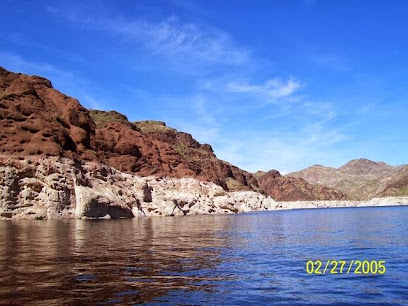
Romano's Macaroni Grill
Experience authentic Italian cuisine at Romano's Macaroni Grill in Las Vegas – where every meal feels like a celebration!

Lake Mead
Discover the breathtaking beauty of Lake Mead - an oasis of adventure in the Mojave Desert with endless opportunities for recreation.

Lake Mead Cruises
Discover breathtaking landscapes at Lake Mead Cruises - an unforgettable boating experience in Nevada's stunning natural beauty.

Bighorn Cafe
Experience delicious breakfasts at Bighorn Cafe with stunning views of Lake Mead - the perfect start to your Boulder City adventure.
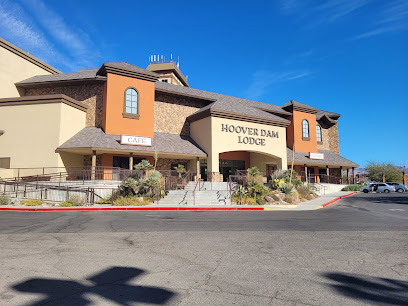
Hoover Dam Cafe
Discover delicious comfort food at Hoover Dam Cafe, your perfect dining stop near the iconic Hoover Dam in Boulder City.

Markets, malls and hidden boutiques
Lake Mead National Recreation Area
Discover breathtaking landscapes and endless outdoor adventures at Lake Mead National Recreation Area, a true gem of Nevada's natural beauty.

Bonanza Gift Shop
Discover unique souvenirs, clothing, jewelry, and more at Bonanza Gift Shop, the largest gift shop in Las Vegas, perfect for all ages.

Lake Mead - Lakeview Overlook
Explore the stunning vistas of Lake Mead - Lakeview Overlook, where every angle captures nature's breathtaking beauty in Nevada's scenic landscape.

Lake Mead Crossing
Explore Lake Mead Crossing: A dynamic business center in Henderson, NV, offering shopping, dining, and entertainment for every traveler.

Lake Mead Marina
Explore Lake Mead Marina: A serene getaway for boating, dining, and outdoor adventures amid stunning Nevada landscapes.

Lake Mead/Decatur Shopping Center
Discover the vibrant shopping experience at Lake Mead/Decatur Shopping Center, where retail therapy meets culinary delights in Las Vegas.

Tom Devlin's Monster Museum
Discover the thrilling blend of horror and art at Tom Devlin's Monster Museum in Boulder City, Nevada, a unique destination for all monster enthusiasts.
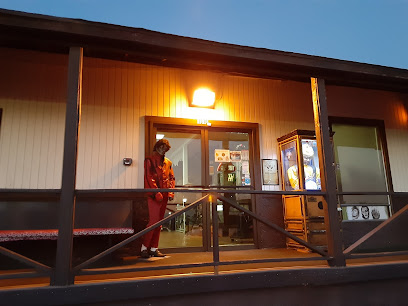
Lake Mead Visitor Center
Explore the Lake Mead Visitor Center: your gateway to adventure, history, and stunning landscapes in Nevada's breathtaking national recreation area.

Las Vegas Boat Harbor
Discover adventure and relaxation at Las Vegas Boat Harbor, your gateway to unforgettable experiences on Lake Mead.

Historic Railroad Hiking Trail
Discover the Historic Railroad Hiking Trail in Boulder City, NV – a scenic journey through history with stunning views of Lake Mead.

Dam Roast House & Browder Bookstore
Explore the delightful blend of coffee and literature at Dam Roast House & Browder Bookstore in Boulder City, a perfect retreat for tourists.

Goatfeathers
Explore the charm of Goatfeathers, Boulder City's beloved antique store brimming with unique vintage finds and nostalgic treasures.

Boulder City Co. Store
Discover Boulder City Co. Store: Your ultimate destination for coffee, unique clothing, and handcrafted gifts in Boulder City, Nevada.

Cemetery Pulp - Oddities and More
Discover the extraordinary at Cemetery Pulp, Las Vegas's premier destination for antiques, art, and oddities that will ignite your curiosity.

Boulder City Antique Market
Explore the Boulder City Antique Market, where history and charm meet in a treasure trove of antiques and collectibles.

Essential bars & hidden hideouts
Lake Mead National Recreation Area
Discover the breathtaking beauty and endless adventures at Lake Mead National Recreation Area, a perfect escape for nature lovers and outdoor enthusiasts.

Lake Mead - Lakeview Overlook
Experience the stunning vistas of Lake Mead from Lakeview Overlook, a must-visit scenic spot in Boulder City, Nevada.

Fox Smokehouse BBQ
Experience the authentic taste of barbecue at Fox Smokehouse BBQ in Boulder City, where every bite tells a delicious story.

The Dillinger
Discover Boulder City's vibrant dining scene at The Dillinger, where delicious food meets live music in a lively atmosphere.
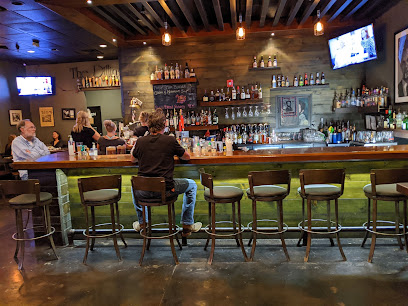
Lake Mead Marina
Discover the beauty and adventure at Lake Mead Marina, the ultimate destination for water sports and relaxation amidst breathtaking natural landscapes.

Boulder Dam Brewing Co.
Experience the best of local craft beer and delicious cuisine at Boulder Dam Brewing Co. in the heart of Boulder City, Nevada.

Timbers Bar & Grill
Discover the vibrant atmosphere and mouthwatering grilled dishes at Timbers Bar & Grill, a true Las Vegas gem.

Harbor House Cafe
Discover the flavors of America at Harbor House Cafe, your perfect lakeside dining retreat in Boulder City, NV.
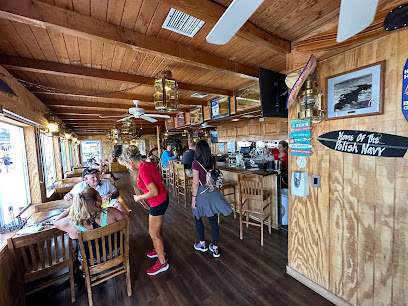
Lake Mead Cruises
Experience breathtaking views and adventure on the waters of Lake Mead with exceptional boat tours and dining options.

The Tap
Experience the best of American cuisine at The Tap, a cozy restaurant in Boulder City, NV, perfect for tourists exploring the area.
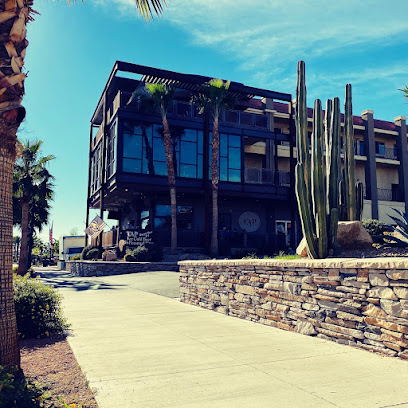
Jack's Place
Experience the ultimate sports bar at Jack's Place in Boulder City, where great food meets live sports and a vibrant atmosphere.
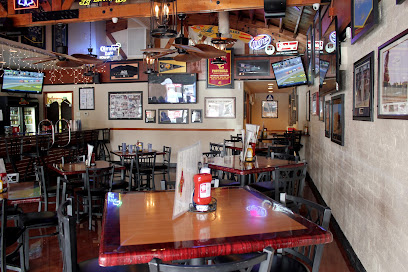
Charlie's Down Under
Discover the flavors of Australia at Charlie's Down Under, a unique bar and grill experience in the heart of Las Vegas.

Muddy River Bar & Grill
Discover the delightful dining experience at Muddy River Bar & Grill in Moapa, where local flavors and a relaxed atmosphere await every traveler.
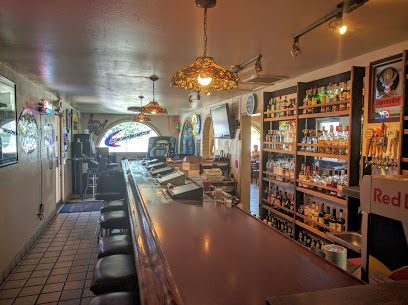
Milo's Cellar
Experience the best of Boulder City’s wine culture at Milo's Cellar, where exquisite flavors meet a charming ambiance in the heart of Nevada.

Big T's Cantina
Experience the vibrant flavors of Mexico at Big T's Cantina in Boulder City, where every dish is a celebration of taste and culture.

Local Phrases about Lake Mead National Recreation Area
-
- HelloHowdy
[haw-dee] - GoodbyeAdios
[ah-dee-ohs] - YesYeah
[yeh] - NoNope
[nohp] - Please/You're welcomePlease/You're welcome
[pleez/yur wel-kum] - Thank youThanks
[thanks] - Excuse me/SorryExcuse me/Sorry
[ik-skyoos mee/sor-ee] - How are you?How are ya?
[hawr yuh?] - Fine. And you?Fine. And you?
[fahyn. and yuh?] - Do you speak English?Speak English?
[speek ing-glish?] - I don't understandI don't get it
[ahy dohnt get it]
- HelloHowdy
-
- I'd like to see the menu, pleaseI'd like to see the menu, please
[ahyd lahk too see thee men-yoo, pleez] - I don't eat meatI don't eat meat
[ahy dohnt eet meet] - Cheers!Cheers!
[cheerz] - I would like to pay, pleaseI would like to pay, please
[ahy wood lahk too pay, pleez]
- I'd like to see the menu, pleaseI'd like to see the menu, please
-
- Help!Help!
[help!] - Go away!Go away!
[goh uh-way!] - Call the Police!Call the Police!
[kawl thee puh-lees!] - Call a doctor!Call a doctor!
[kawl uh dok-ter!] - I'm lostI'm lost
[ahym lost] - I'm illI'm sick
[ahym sik]
- Help!Help!
-
- I'd like to buy...I'd like to buy...
[ahyd lahk too by...] - I'm just lookingI'm just looking
[ahym jehst look-ing] - How much is it?How much is it?
[haw much iz it?] - That's too expensiveThat's too pricey
[thats tooh prahy-see] - Can you lower the price?Can you lower the price?
[kan yuh loh-er the prahys?]
- I'd like to buy...I'd like to buy...
-
- What time is it?What time is it?
[wut tahym iz it?] - It's one o'clockIt's one o'clock
[its wuhn oh-klok] - Half past (10)Half past (10)
[haf past (10)] - MorningMorning
[mawr-ning] - AfternoonAfternoon
[af-ter-noon] - EveningEvening
[ee-ven-ing] - YesterdayYesterday
[yest-er-day] - TodayToday
[tuh-day] - TomorrowTomorrow
[tuh-maw-row] - 11
[wuhn] - 22
[too] - 33
[three] - 44
[for] - 55
[fahyv] - 66
[siks] - 77
[sev-uhn] - 88
[eyt] - 99
[nine] - 1010
[ten]
- What time is it?What time is it?
-
- Where's a/the...?Where's a/the...?
[wheres a/the...] - What's the address?What's the address?
[whats the ad-dress?] - Can you show me (on the map)?Can you show me (on the map)?
[kan yuh show mee (on thee map)?] - When's the next (bus)?When's the next (bus)?
[whens the nekst (bus)?] - A ticket (to ....)A ticket (to ....)
[uh tik-it (too ....)]
- Where's a/the...?Where's a/the...?
History of Lake Mead National Recreation Area
-
Lake Mead was formed by the construction of the Hoover Dam on the Colorado River, completed in 1936. The dam was built as part of President Franklin D. Roosevelt's New Deal during the Great Depression and was a monumental engineering feat of its time. The reservoir was named after Elwood Mead, who oversaw the Bureau of Reclamation from 1924 to 1936.
-
The construction of the Hoover Dam began in 1931 and was completed in 1936. Thousands of workers were involved in this massive project, which required innovative engineering solutions to manage the Colorado River. The dam is 726 feet high and 1,244 feet long, and it generates hydroelectric power, providing electricity to Nevada, Arizona, and California.
-
Boulder City was established in 1931 to house the workers building the Hoover Dam. It was one of the few places in the United States where alcohol was prohibited, and it was designed to be a model city with modern amenities. Today, Boulder City retains much of its historical charm and serves as a gateway to Lake Mead National Recreation Area.
-
During World War II, Lake Mead played a crucial role as a training ground for bomber crews. The Army Air Forces used the vast, open space of the lake to practice water landings and other maneuvers. The area around the lake was also used for testing and training purposes, contributing to the war effort.
-
Lake Mead National Recreation Area was established in 1964 as the first national recreation area in the United States. Managed by the National Park Service, the area encompasses nearly 1.5 million acres of land and water, offering a wide range of recreational activities and preserving significant natural and cultural resources.
-
The area around Lake Mead has a rich Native American history, with evidence of human habitation dating back thousands of years. The Southern Paiute and Mojave tribes were among the indigenous peoples who lived in the region. Petroglyphs, pottery shards, and other artifacts found in the area provide insights into their way of life.
-
Lake Mead has faced significant environmental challenges, including fluctuating water levels due to prolonged drought and increased water demand. These changes have impacted the local ecosystem, recreational activities, and water supply for millions of people. Efforts are ongoing to address these issues and ensure the sustainability of the lake and its surroundings.
Lake Mead National Recreation Area Essentials
-
Lake Mead National Recreation Area is located approximately 30 miles southeast of Las Vegas, Nevada. The nearest major airport is McCarran International Airport (LAS) in Las Vegas. From the airport, you can rent a car or take a shuttle service to reach the recreation area. The drive from Las Vegas to Lake Mead typically takes about 45 minutes. Alternatively, you can take a Greyhound bus to Boulder City and then a local bus or taxi to Lake Mead.
-
To explore Lake Mead National Recreation Area, renting a car is the most convenient option since the area is vast and public transportation is limited. There are several car rental agencies in Las Vegas and Boulder City. For those who prefer not to drive, guided tours are available and often include transportation. Biking and hiking are also popular ways to explore the area. Keep in mind that some remote areas may require a 4-wheel drive vehicle.
-
The official currency in the United States is the US Dollar (USD). Credit and debit cards are widely accepted at most facilities within Lake Mead National Recreation Area, including visitor centers, restaurants, and shops. It is advisable to carry some cash for use in more remote areas or smaller establishments. ATMs are available in nearby towns such as Boulder City and Henderson.
-
Lake Mead National Recreation Area is generally safe for tourists, but standard precautions should be taken. Avoid leaving valuables in your car and be cautious in less populated areas. The park's vast size and desert climate can pose natural hazards such as extreme heat, dehydration, and wildlife encounters. Always stay on marked trails, carry plenty of water, and inform someone of your plans. There are no specific high-crime areas targeting tourists within the park, but it is always best to stay vigilant and aware of your surroundings.
-
In case of an emergency, dial 911 for immediate assistance. The Lake Mead National Recreation Area has its own park rangers who can assist with emergencies. There are also medical facilities and hospitals in nearby Boulder City and Henderson. It is recommended to have travel insurance that covers medical emergencies. For minor health issues, there are pharmacies in the nearby towns where you can purchase over-the-counter medications.
-
Fashion: Do wear comfortable and weather-appropriate clothing, including hats, sunglasses, and sunscreen to protect against the sun. Avoid wearing heavy or restrictive clothing. Religion: Do be respectful of any cultural or religious sites within the area. Public Transport: Do plan your transportation ahead of time as public transport options are limited. Don't rely on ride-sharing services exclusively, as they may be scarce. Greetings: Do greet park staff and fellow visitors with a friendly 'hello' or 'good day.' Eating & Drinking: Do bring your own food and water, especially if you plan to spend a lot of time outdoors. Don't litter; always pack out what you pack in.
-
To experience Lake Mead National Recreation Area like a local, visit the park early in the morning or late in the afternoon to avoid the heat and crowds. Explore lesser-known areas such as the Temple Bar Marina or the Overton Arm for a quieter experience. Engage with park rangers and volunteers who can provide valuable insights and recommendations. Don't miss out on the Hoover Dam tour for a fascinating glimpse into the history and engineering of this iconic structure. For a unique experience, try kayaking or paddleboarding on the lake.
Nearby Cities to Lake Mead National Recreation Area
-
Things To Do in Henderson
-
Things To Do in North Las Vegas
-
Things To Do in Mesquite
-
Things To Do in Laughlin
-
Things To Do in Kingman
-
Things To Do in St. George
-
Things To Do in Springdale
-
Things To Do in Lake Havasu City
-
Things To Do in Kanab
-
Things To Do in Mt Carmel
-
Things To Do in Grand Canyon Village
-
Things To Do in Cedar City
-
Things To Do in Prescott
-
Things To Do in Panguitch
-
Things To Do in Bryce Canyon City











